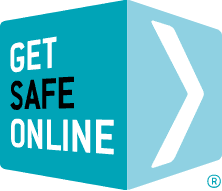The main risks are associated with your child befriending or talking with a stranger who may be stalking them, cyberbullying from either strangers or people they already know, being scammed by downloading or linking to hoax content, and identity theft by revealing private information in profiles and posts. And though it may seem unthinkable, you child could be bullying or saying inappropriate things about somebody else, rather than being the target.
Teach your child to be very careful to befriend and communicate with only trusted people that they know. Tell them that revealing personal details such as their birth date, address, pet’s name or teacher could give someone all the information they know to harm them. Teach them not to click on links or download from sites they have linked to.
And teach them about safe use of passwords and other login details. It’s very commonplace for children’s pages to be hacked into, their profiles being changed either for fun or maliciously, or harmful comments to be posted by someone else in their name. This can also happen if they leave their computer or mobile device on and walk away from it without logging off the site.
Above all, assure them that it’s OK to come to you or another trusted adult if they feel threatened by or uncomfortable about something they have seen or done on a social networking site.
All of the above information and advice applies to instant messaging services too.
Here is some information on Facebook and Twitter, two of the social networking sites.
Facebook is the most popular social networking site on the planet. All of the advice listed under Social networking and instant messaging applies including that about potential bullying, stalking, scamming, malicious posts, identity theft and hacking. Discuss these questions with your child:
- Do you know your friends?
- Who can find what you post on Facebook?
- Be in control of what you share online
- How does your profile appear?
- Do you know how to use ‘Graph Search’?
- How to manage ‘Hidden from timeline’ changes?
- How do you use your Friends lists?
- Do you know how to deactivate your account?
Twitter is a social networking site which enables its users to send and read short messages or ‘tweets’. With well over 500 million registered users around the world, it is one of the ten most visited sites, and becoming increasingly popular with young people. The main things to watch out for and advise your child about are malicious or bullying tweets, and not clicking on links that could be hoax.
For comprehensive information about using social networking sites, instant messaging and chatrooms safely, click here.
.

